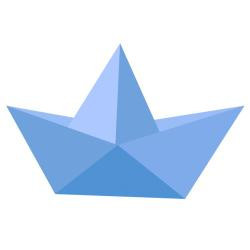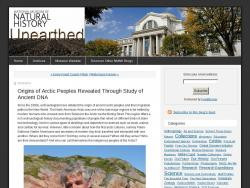Michele Hubert's collections
Weather and Climate (Earth and Space Systems)-- Lesson Plans and Information
<p>What does the weather do to the ocean currents?</p>
<p>Ocean water and currents affect the climate. It takes a greater amount of energy to change the temperature of water than land or air; water warms up and cools off much slower than land or air does. As a result, inland climates are subject to more extreme temperature ranges than coastal climates, which are insulated by nearby water. Over half the heat that reaches the earth from the sun is absorbed by the ocean's surface layer, so surface currents move a lot of heat. Currents that originate near the equator are warm; currents that flow from the poles are cold.
</p>
<p><strong>The Great Ocean Conveyor Belt</strong>
</p>
<p>The great ocean conveyor belt is an example of a density-driven current. These are also called thermohaline currents, because they are forced by differences in temperature or salinity, which affect the density of the water. </p>
<p>The great ocean conveyor belt begins as the coolest of all currents - literally. At the beginning of the conveyor belt:</p>
<p>The Gulf Stream delivers warm, and relatively salty, surface waters north to the Norwegian Sea. There the water gives up its heat to the atmosphere, especially during the frigidly cold winters. The surface waters cool to near freezing temperatures, at which time they become denser than the waters below them and sink. This process continues making cold water so dense that it sinks all the way to the bottom of the ocean.
</p>
<p>During this time, the Gulf Stream continues to deliver warm water to the Norwegian Sea on the surface. The water can't very well pile up in the Norwegian Sea, so the deep cold water flows southward. It continues to flow southward, passing the Equator, until it enters the bottom of the Antarctic Circumpolar current. It then drifts around Africa and Australia, until it seeps northward into the bottom of the Pacific.
</p>
<p>
</p>
<p><br /></p>
 Michele Hubert
Michele Hubert
10
Navigation: Past and Present -- Lesson Plans and Information
<p>By the dawn of the sixteenth century, the ancient art of navigation had begun to develop rapidly in response to new advancements that enabled oceanic explorers to more accurately locate their positions without landmarks, to determine the locations of their discoveries, and to establish routes between the new-found lands and home. Although the relationship of certain heavenly bodies to time of day and terrestrial directions had been known since ancient times, the first two decades of the sixteenth century saw the rigorous application of astronomy and mathematics to navigation.</p>
<p>Navigation is based largely on the spherical coordinates <strong>latitude</strong> -angular distance north or south of the equator - and <strong>longitude</strong> - angular distance east or west of a generally accepted reference location, such as the Greenwich Observatory in London, United Kingdom. Finding longitude requires measuring the angle contained between the meridian of a particular place and some prime meridian, that was located in Greenwich, England, and expressed either in degrees or by some corresponding differences in time. Mechanical time-pieces existed in the Elizabethan era, but until the late eighteenth century they had to be corrected frequently by sun sightings and were therefore almost useless aboard ship. Measuring latitude, on the other hand, does not require an accurate time-piece. Refinement of instruments enabled sixteenth-century mariners to determine latitude with reasonable accuracy. </p>
 Michele Hubert
Michele Hubert
25
Migration - Lesson Plans and Information
<p>How was migration affected by the use of canoes/boats?</p>
<p>The earliest human <strong>migrations</strong> and expansions of archaic and modern humans across continents began 2 million years ago with the <strong>migration</strong> out of Africa of Homo erectus. This was followed by the <strong>migrations</strong> of other pre-modern humans including Homo heidelbergensis, the likely ancestor of both modern humans and Neanderthals.<br /></p>
 Michele Hubert
Michele Hubert
6




